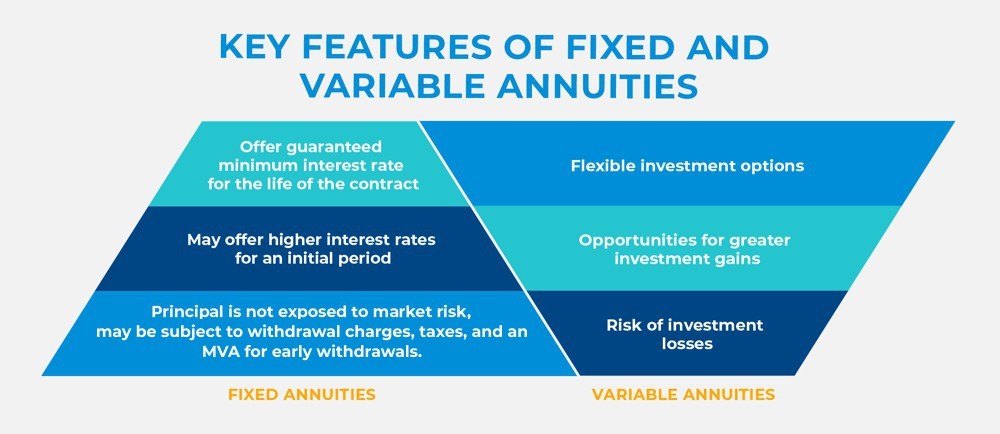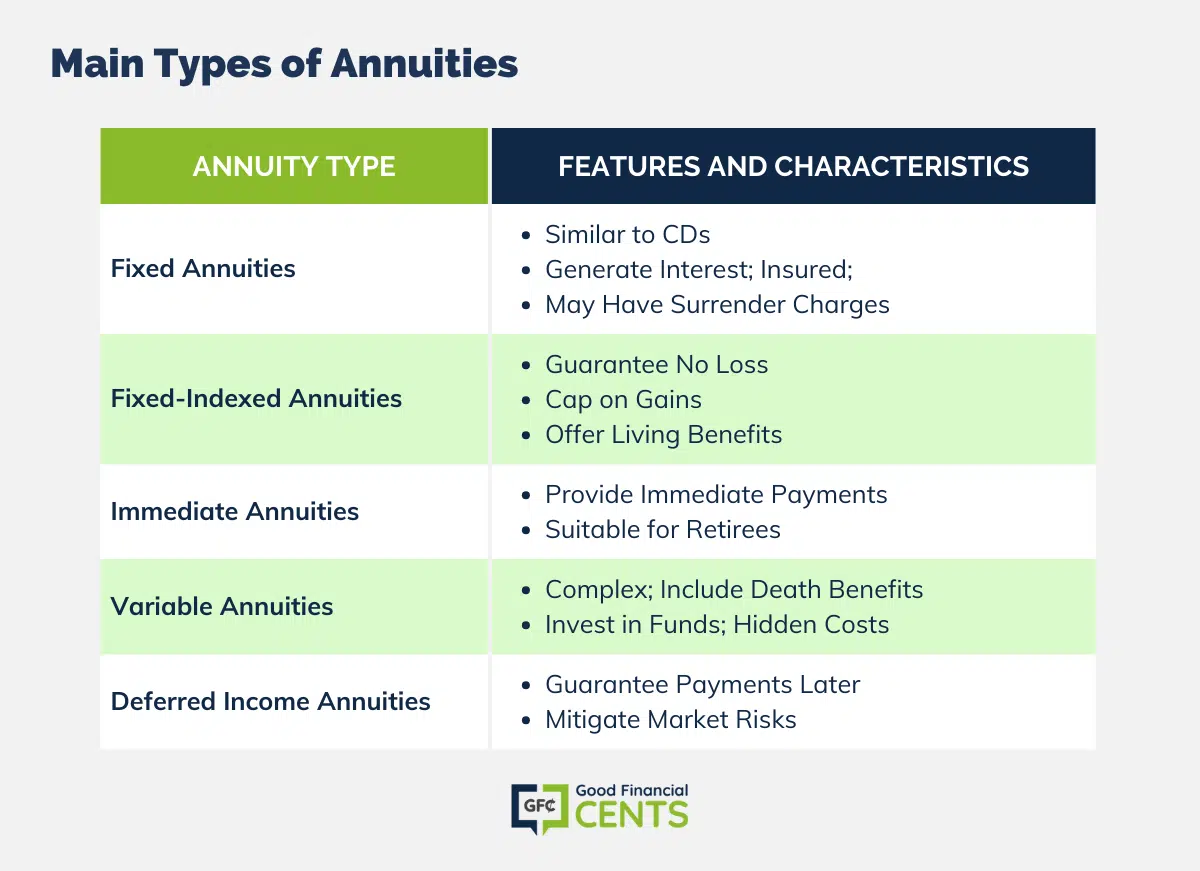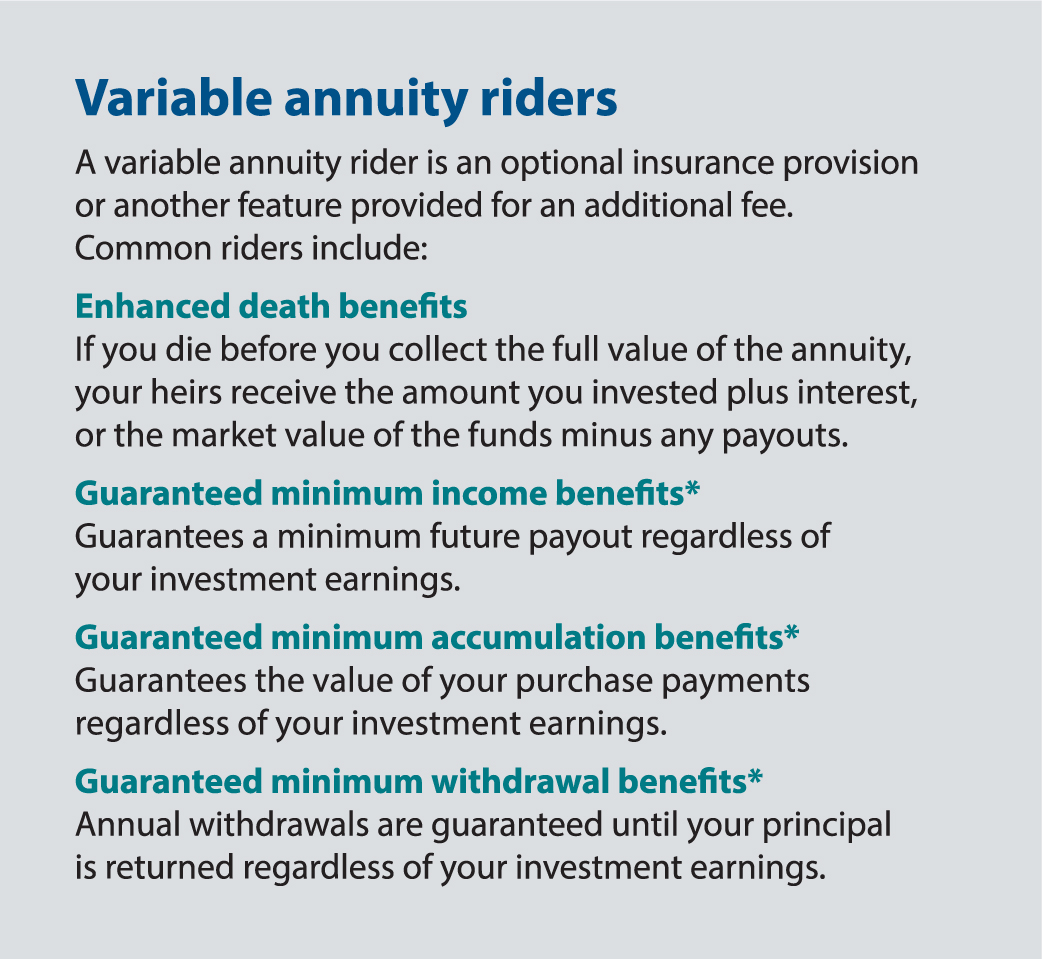All Categories
Featured
Table of Contents
Equally as with a dealt with annuity, the proprietor of a variable annuity pays an insurer a lump sum or collection of repayments for the guarantee of a series of future settlements in return. Yet as pointed out above, while a fixed annuity expands at a guaranteed, constant price, a variable annuity expands at a variable rate that depends upon the performance of the underlying investments, called sub-accounts.

Throughout the build-up phase, assets purchased variable annuity sub-accounts grow on a tax-deferred basis and are exhausted only when the contract proprietor withdraws those profits from the account. After the buildup stage comes the income stage. With time, variable annuity properties need to in theory increase in worth until the agreement owner determines she or he would certainly such as to start taking out money from the account.
One of the most considerable problem that variable annuities generally existing is high cost. Variable annuities have a number of layers of costs and expenditures that can, in accumulation, produce a drag of up to 3-4% of the contract's value annually. Below are one of the most common charges connected with variable annuities. This cost compensates the insurance provider for the threat that it thinks under the terms of the contract.
Highlighting Fixed Vs Variable Annuity Key Insights on Your Financial Future Defining Fixed Income Annuity Vs Variable Growth Annuity Advantages and Disadvantages of Different Retirement Plans Why Choosing the Right Financial Strategy Is Worth Considering How to Compare Different Investment Plans: How It Works Key Differences Between Different Financial Strategies Understanding the Risks of Long-Term Investments Who Should Consider Fixed Annuity Vs Equity-linked Variable Annuity? Tips for Choosing the Best Investment Strategy FAQs About Fixed Vs Variable Annuity Pros And Cons Common Mistakes to Avoid When Choosing a Financial Strategy Financial Planning Simplified: Understanding Fixed Index Annuity Vs Variable Annuity A Beginner’s Guide to Smart Investment Decisions A Closer Look at How to Build a Retirement Plan
M&E expense fees are calculated as a percentage of the agreement value Annuity companies pass on recordkeeping and other administrative costs to the contract proprietor. This can be in the type of a flat yearly cost or a portion of the contract worth. Administrative costs might be consisted of as part of the M&E threat cost or might be examined independently.
These charges can range from 0.1% for easy funds to 1.5% or more for actively managed funds. Annuity contracts can be tailored in a number of means to serve the specific needs of the agreement proprietor. Some typical variable annuity cyclists include assured minimum buildup advantage (GMAB), guaranteed minimum withdrawal benefit (GMWB), and guaranteed minimum earnings benefit (GMIB).

Variable annuity payments provide no such tax reduction. Variable annuities tend to be highly inefficient vehicles for passing wealth to the next generation since they do not delight in a cost-basis modification when the initial contract owner passes away. When the owner of a taxed financial investment account passes away, the cost bases of the financial investments kept in the account are adjusted to show the marketplace rates of those investments at the time of the proprietor's fatality.
Understanding Variable Annuity Vs Fixed Indexed Annuity A Comprehensive Guide to Investment Choices Breaking Down the Basics of Fixed Vs Variable Annuity Pros And Cons Benefits of Fixed Vs Variable Annuity Pros And Cons Why Choosing the Right Financial Strategy Is Worth Considering How to Compare Different Investment Plans: Explained in Detail Key Differences Between Fixed Vs Variable Annuity Pros And Cons Understanding the Risks of Pros And Cons Of Fixed Annuity And Variable Annuity Who Should Consider Variable Annuity Vs Fixed Annuity? Tips for Choosing the Best Investment Strategy FAQs About Fixed Index Annuity Vs Variable Annuities Common Mistakes to Avoid When Planning Your Retirement Financial Planning Simplified: Understanding Your Options A Beginner’s Guide to Smart Investment Decisions A Closer Look at How to Build a Retirement Plan
Consequently, heirs can inherit a taxed financial investment portfolio with a "fresh start" from a tax obligation point of view. Such is not the situation with variable annuities. Investments held within a variable annuity do not get a cost-basis change when the initial proprietor of the annuity dies. This implies that any accumulated unrealized gains will be passed on to the annuity owner's heirs, along with the linked tax problem.
One considerable concern related to variable annuities is the capacity for conflicts of passion that might exist on the component of annuity salespeople. Unlike a financial expert, who has a fiduciary task to make investment decisions that benefit the client, an insurance coverage broker has no such fiduciary commitment. Annuity sales are highly rewarding for the insurance coverage professionals that sell them as a result of high in advance sales compensations.

Many variable annuity contracts contain language which places a cap on the portion of gain that can be experienced by specific sub-accounts. These caps avoid the annuity owner from completely participating in a section of gains that might or else be appreciated in years in which markets generate considerable returns. From an outsider's viewpoint, presumably that financiers are trading a cap on investment returns for the abovementioned guaranteed flooring on financial investment returns.
As noted above, surrender charges can seriously limit an annuity owner's capacity to relocate assets out of an annuity in the very early years of the contract. Additionally, while most variable annuities enable contract proprietors to take out a defined quantity throughout the accumulation stage, withdrawals past this quantity typically cause a company-imposed fee.
Withdrawals made from a fixed rates of interest financial investment alternative can additionally experience a "market value change" or MVA. An MVA adjusts the worth of the withdrawal to mirror any type of adjustments in rates of interest from the moment that the cash was bought the fixed-rate choice to the time that it was taken out.

Frequently, even the salespeople who sell them do not completely comprehend just how they work, therefore salespeople occasionally victimize a buyer's emotions to offer variable annuities as opposed to the values and suitability of the products themselves. Our team believe that capitalists should fully comprehend what they own and just how much they are paying to have it.
Analyzing Fixed Vs Variable Annuities A Comprehensive Guide to Investment Choices Breaking Down the Basics of Investment Plans Pros and Cons of Annuities Variable Vs Fixed Why Fixed Vs Variable Annuities Can Impact Your Future How to Compare Different Investment Plans: A Complete Overview Key Differences Between Fixed Vs Variable Annuities Understanding the Risks of Long-Term Investments Who Should Consider Strategic Financial Planning? Tips for Choosing the Best Investment Strategy FAQs About Pros And Cons Of Fixed Annuity And Variable Annuity Common Mistakes to Avoid When Planning Your Retirement Financial Planning Simplified: Understanding Fixed Income Annuity Vs Variable Growth Annuity A Beginner’s Guide to Smart Investment Decisions A Closer Look at How to Build a Retirement Plan
The same can not be stated for variable annuity possessions held in fixed-rate investments. These assets legitimately come from the insurance policy business and would for that reason be at risk if the firm were to fail. Any kind of warranties that the insurance firm has agreed to provide, such as an assured minimal revenue advantage, would be in question in the event of a business failing.
Possible purchasers of variable annuities should understand and take into consideration the financial problem of the issuing insurance policy business prior to entering into an annuity agreement. While the advantages and disadvantages of different kinds of annuities can be disputed, the real issue surrounding annuities is that of suitability. Simply put, the inquiry is: who should own a variable annuity? This question can be difficult to address, offered the myriad variations offered in the variable annuity universe, but there are some basic standards that can help financiers determine whether or not annuities should contribute in their economic strategies.
As the claiming goes: "Customer beware!" This article is prepared by Pekin Hardy Strauss, Inc. Annuity payout options. ("Pekin Hardy," dba Pekin Hardy Strauss Wide Range Monitoring) for educational functions just and is not planned as a deal or solicitation for business. The details and data in this article does not make up legal, tax obligation, audit, financial investment, or various other expert advice
Table of Contents
Latest Posts
Understanding Variable Annuities Vs Fixed Annuities Everything You Need to Know About Retirement Income Fixed Vs Variable Annuity What Is Fixed Annuity Vs Equity-linked Variable Annuity? Pros and Cons
Highlighting Fixed Annuity Vs Equity-linked Variable Annuity A Closer Look at Fixed Annuity Vs Equity-linked Variable Annuity Defining What Is A Variable Annuity Vs A Fixed Annuity Features of Smart I
Analyzing Strategic Retirement Planning Key Insights on Your Financial Future Breaking Down the Basics of Investment Plans Advantages and Disadvantages of Fixed Indexed Annuity Vs Market-variable Annu
More
Latest Posts